#german titov
Text
April reads
The Free People’s Village by Sim Kern
Burning Girls and Other Stories by Veronica Schanoes
Belonging: A German Reckons with History and Home by Nora Krug
I Was Their American Dream: A Graphic Memoir by Malaka Gharib
That Summer Feeling by Bridget Morrissey
Be Gay, Do Comics: Queer History, Memoir, and Satire From The Nib edited by Matt Bors and Mattie Lubchansky
Greta & Valdin by Rebecca K Reilly
Eat the Rich by Sarah Gailey, Pius Bak, and Roman Titov
A Tip for the Hangman by Allison Epstein
The Earth in the Attic by Fady Joudah
Business or Pleasure by Rachel Lynn Solomon
Sailor’s Delight by Rose Lerner
Rosaline Palmer Takes the Cake by Alexis Hall
Something Wild and Wonderful by Anita Kelly
These Fragile Graces, This Fugitive Heart by Izzy Wasserstein
[Title unspecified for SMP boycott]
The Haunting of Heatherhurst Hall by Sebastian Nothwell
The Táin: The Woman’s Stories by Karina Tynan
Hard Sell by Hudson Lin
Tripping Arcadia by Kit Mayquist
Her First Palestinian by Saeed Teebi
Just Lizzie by Karen Wilfrid
Empire of the Fesst by Bendi Barrett
Men I Trust by Tommi Parrish
5 notes
·
View notes
Photo



Why are we still listening to terrible men’s stories about Ellen Berger?
Meet Ellen Berger, she was the president of the FIG Women’s Technical Committee from 1976 until 1992 and oversaw the birth of what most people would consider the modern age of the sport of gymnastics as it’s chief international judge and head of the rules making body. One of the few biographical sources we have about her is this article from Neue Zeit from 1978. Neue Zeit was the newspaper of the Christina Democratic Union, the captive opposition party of the East German state. A profile in that paper leaves us with tantalizing hints about her as a person suggesting that she was not the communist drone some people would later paint her.
Berger was a gymnast in the 1940s in the eastern German state of Saxony and later became the coach of Erika Zuchold. To understand Ellen Berger the judge you need to understand the kind of gymnastics Zuchold did. She was the first woman to do a back handspring on a balance beam (at the 1966 World Championships) and along with Věra Čáslavská is credited as one of the first two women to do a front handspring on beam (at the 1968 Olympic Games)... I want to stress this the beam in the 1960s was an uncovered solid slab of wood. She won the 1970 World All Around Silver behind the great Ludmilla Tourischeva and the 1970 vault and balance beam world championships. Zuchold is a great of the sport we do not speak enough about (in part because the East Germans don’t fit neatly into a lot of the legends we tell about the sport’s history). What Zuchold tells us about Berger is that she was pushing the edge of difficulty and innovation in the sport and when she would get to the WTC she would do the same with the rules.
During Berger’s time as WTC president the sport got floor springs, the bars moved further apart and banned stopping during uneven bars routines (which used to have more pauses and posing like a mix of balance beam and MAG parallel bars), and the Yurchenko vault family changed the way women vaulted. All of which had to be accepted and the code of points adapted around. I outlined in a previous post how the 1980s code of points encouraged innovation and originality.
If you have heard her name before though, it’s likely either as the woman who “stole” an American bronze medal (for imposing a published deduction for a rarely violated rule) in 1988. In 1988 coaches were not allowed to spot on the uneven bars and if they needed to pull the spring board the rule was that they needed to pull the board and immediately get off the podium. During 1988 compulsories Bela Karolyi ordered team alternate Rhonda Faehn to pull the board and then crouch behind it on the podium. For a modern gymnastics fan imagined if someone was pulling the board away from the balance beam and then sat on the podium next to the apparatus the entire routine. The penalty for this was a .5 neutral deduction which was voted on by the entire WTC (sans Jackie Fie of the United States who abstained) and the difference between 3rd and 4th place between East Germany and the United States was less than that deduction. The American press immediately went into outrage mode painting Berger as a villain and characterizing every action she took (including instructing judges not to allow compulsory scores to rise during the day) as calculated to cheat. Not helped by the fact that FIG president Yuri Titov would apologize to the American delegation for Berger’s actions. But Titov was also the man who told the world that Elena Mukhina’s injury was the result of her trying to invent a new skill out of desperation and that perhaps if she worked hard enough she could return to the sport. She was paralyzed.
If you’ve been listening to Gymcastic you’ve probably heard a version of this story where this was Berger’s revenge for a deduction she didn’t take in 1984 when Bela Karolyi jumped over the barrier to hug Mary Lou Retton on TV. Sometimes Jessica will tell you that Kathy Johnson was the origin of this story. She was not. The story comes from Don Peters who was telling it to the American press the day after compulsories when he was not in Korea and the story makes him out to be a diplomat with the hot headed Karolyi. Neither Jessica nor the papers quoting him added that less than a month before Bela had staged a coup to replace Peters as the head coach of the Olympic team. Gymnastics fandom has allowed three of the most terrible men in the sport, Titov, Karolyi, and sexual predator Don Peters to define this woman as corrupt.
Berger herself refused to defend herself saying simply that the WTC had enforced the rule from the code of points.
What do we know about Berger and corruption, after all wasn’t this the era of score fixing and doesn’t she even look like the caricature of the bias East German judge? Well let’s go back to the 1980 Olympic Games and one undeniable corrupt judge Romanian Maria Simionescu the vice president of the WTC. During the 1980 All Around Nadia Comaneci had a number of very notable errors in her beam routine and Simionescu attempted to intimidate the judging panel in order to steal the gold medal for Nadia. In 2020 Lidia Ivanova, a beam judge at the 1980 Olympics describes what happened.
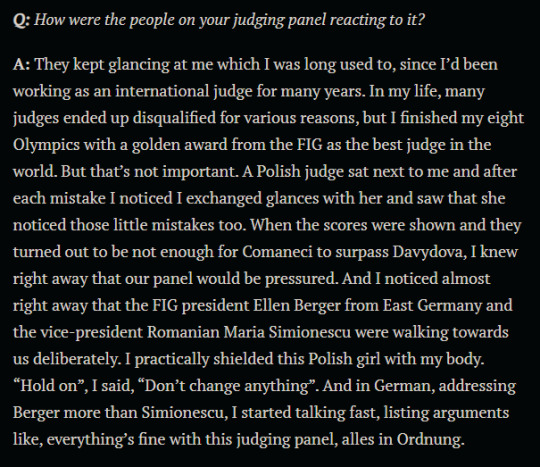
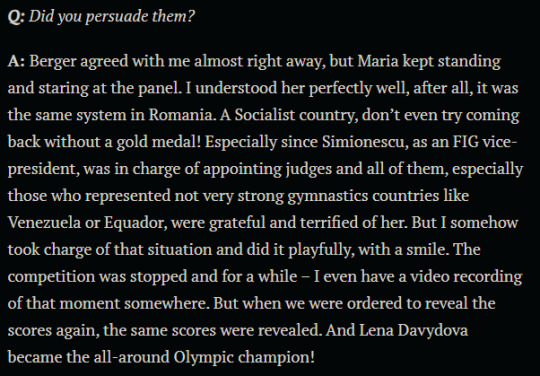
In a story of outright corruption in the sport, in one of it’s most famous incidents, Berger sides with the judges. She would institute reforms towards fairer judging throughout her time at the WTC. After the truly nutty 1983 and 1984 explosion of 10.0 scores the judging panel in WAG was expanded from 4 judges to 6. In 1988 she would caution judges to be careful about scores drifting higher during the day and in 1992 in a last ditch effort to make compulsory judging fairer gymnasts were shuffled throughout the day rather than competing as a team.
But 1992 was Berger’s last year as head of the WTC, and though her obituary says it was her choice that is somewhat doubtful. She was 71 years old which for a FIG high official wasn’t that old but she had a problem bigger than her age. She no longer had a country. FIG officials had to be backed for election by their federation and in 1989 the East German state collapsed. With unification the new German gymnastics federation was never going to support her for re-election so she stepped aside gracefully, the last 3 years of her term essentially being a lame duck.
One more thing worth noting, FIG officials are often notorious for casual racism but I’ve never found such an instance from Berger. In 1991 she even complimented Betty Okino to her coach Bela Karolyi.
She died in 1997 and if remembered at all these days it’s as a cartoonish villain of American gymnastics legend rather than someone who devoted her life to building the sport we know today.
13 notes
·
View notes
Text
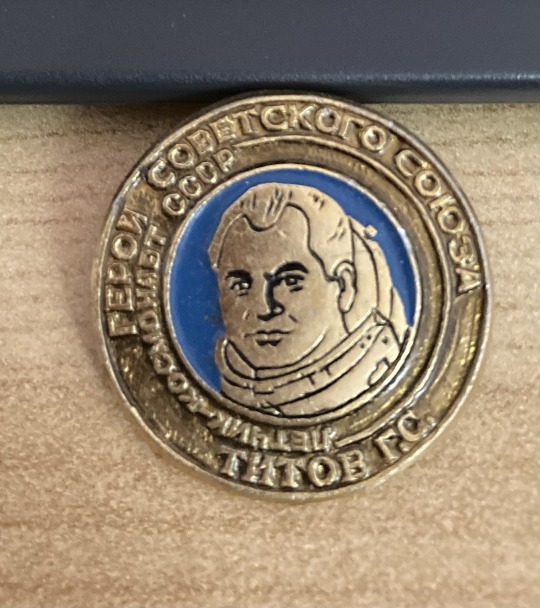
Gli unici souvenir sovietici che compro in ex URSS sono legati ai cosmonauti.
Questo è German Stepanovič Titov, il vice Gagarin: doveva essere lui il primo uomo nello spazio, ma non era abbastanza proletario. In compenso fu il primo a dormire nello spazio - e a vomitare in orbita. Ha anche scattato la prima fotografia della terra dall’orbita.
(tra l’altro che la famosa cosa sul non aver trovato traccia di Dio nello spazio l’ha detta lui e non Gagarin)
9 notes
·
View notes
Text
Where every player played during the 1994-95 NHL lockout: Calgary
Czech Extraliga: František Musil (H.K. Sparta Praha)
DEL: Robert Reichel (Frankfurt Löwen)
IHL (Russia): Nikolai Borschevsky (K.K. Spartak Moscow)
NL: Phil Housley (Zürcher S.C.)
OHL: Jamie Allison (Detroit Jr. Red Wings)
IHL: Steve Konroyd (Chicago Wolves) & Rick Tabaracci (Chicago Wolves)
Liiga: Theo Fleury (Tampereen Tappara), Michael Nylander (J.Y.P.) & German Titov (Turun Palloseura)
AHL: Joël Bouchard (Saint John Flames), Neil Eisenhut (Saint John Flames), Len Esau (Saint John Flames), William Greig (Saint John Flames), Cory Stillman (Saint John Flames) & Ed Ward (Cornwall Aces/Saint John Flames)
Didn't Play: Steve Chiasson, Kevin Dahl, Todd Hlushko, Dan Keczmer, Sheldon Kennedy, Trevor Kidd, Kelvin Kisio, Paul Kruse, Alan May, Sandy McCarthy, Scott Morrow, Jason Muzzatti, Barry Nieckar, Joe Nieuwendyk, Joel Otto, James Patrick, Jim Peplinski, Gary Roberts, Ronnie Stern, Mike Sullivan, Andrei Trefilov, Vesa Viitakoski, Wes Walz, Trent Yawney & Zarley Zalapski
#Sports#Hockey#Hockey Goalies#NHL#Calgary Flames#Czech Republic#Germany#Chicago Wolves#Russia#Switzerland#Canada#Ontario#Finland#AHL#New Brunswick#1990s
0 notes
Text
Trio september

HAPPY BIRTHDAY
Monsta september 15
German titov september 11
Andriyan nikolayev september 5
Date of birth is closer
Sorry late
#Monsta#boboiboy#cosmonaut#Космонавт#German titov#Andriyan nikolayev#my art#art#artwork#digital art#drawing#digital drawing#boboiboy galaxy#Trio september#drawing today#digital artwork#autosketchbook
3 notes
·
View notes
Photo

Khimik Voskresensk head coach Vladimir Vasilyev goes over some tactics with youngsters and future NHLers Valeri Zelepukin and German Titov during a practice sometime in the late 1980s. (Image Source)
#Vladimir Vasilyev#Valeri Zelepukin#German Titov#Forwards#Coaches#Khimik Voskresensk#USSR#Soviet Championship
1 note
·
View note
Link
#collectible#soviet space#photo postcard#German TITOV#USSR Russia#Soviet Era#space propaganda#Space Rocket#moonbyul#New Year postcard#eBay#USSR 1961
0 notes
Text
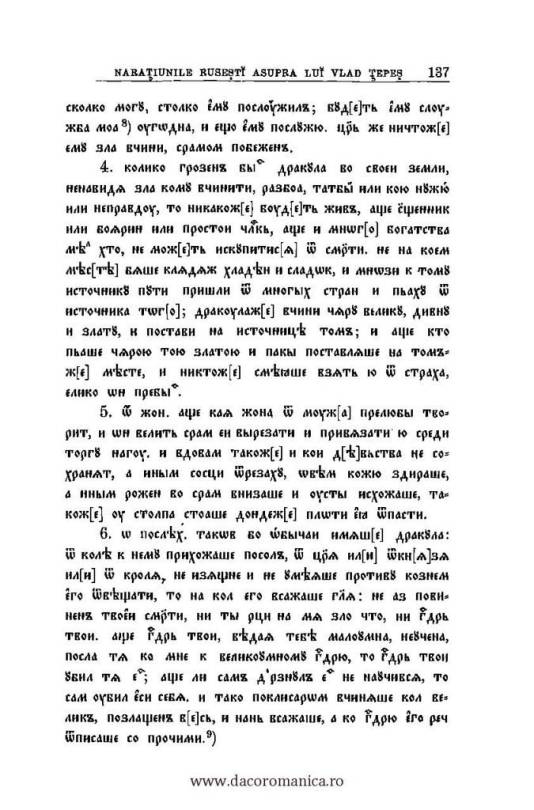
About the Slavic manuscripts. Version I.
Earlier we raised the topic of Slavonic manuscripts, but since we are talking about pamphlets, we will also put up all existing Slavonic manuscripts.
Let us repeat that there are 4 versions of the same text, extremely similar to the text of the German pamphlets.
1. The oldest version is considered to be the Kirill-Belozersky manuscript, now in the library of St. Petersburg, M. E. Saltykov-Shchedrin Library. A copy in the Kirillov Historical and Art Museum, no. 8779
2. Tikhonravovsky's version. Moscow , Lenin's library, from the collection of Tikhonravovsky (col. 299, no. 379).
3. Zabelinsky's version. State Historical Museum, Moscow , no. in the collection 451. A copy in St. Petersburg , the Salnikov-Schedelin State Library, St. Petersburg, Russia. Saltykov-Shchedrin, Titov's collection, no. 2796. And also in the collection of lovers of ancient literature under 3195, in the Archive of the geographical community of the USSR (if still exists, the book was written in 1974), State Library of Lenin, Moscow in the collection of archivist VM Undolsky (310), no. 632.
4. West Russian version in the State Historical Museum of Moscow, Brasov collection, no. 604.
All the manuscripts are similar in general, as they all have the same source. One manuscript is unfinished, another slightly altered. Their author and exact date are unknown. There is speculation, with Florescu, that it is a work from Transylvania, as the Slavic language in Transylvania was also relevant to the writing. However, the word "Mutian" used points to the possibility of Moldavian authorship or Russian. The Romanians themselves called themselves in documents as Wallachians, Wallachia, Ugroovlakhia, also did Transylvania. But in the Moldavian chronicles just more often used a different vocabulary - Muntenia (the first time this word exactly and occurs in the Moldovan rulers). With the Wallachians themselves in the documents of the 15-16th century such specification can be found very rarely, almost impossible. Moreover, the language of the first text does not look like the Slavic language used in the 15-16th centuries in Transylvania and Wallachia, but looks more like Moldavian Slavic, which was significantly different from Wallachian.
So, the versions presented by the historian I. Bogdan in VLAD TEPES ŞI NARATIUNILE GERMANE ŞI RUSEŞTI ASUPRA LUI (1896).
The edition itself is in Romanian, but it contains 3 versions of the manuscript in the original Slavonic as well as one version from a German story that presumably became the basis for the Slavonic manuscripts.
So, the first version of the Slavonic text.
_________
RU:
О славянских манускриптах. Версия I.
Ранее мы поднимали тему о славянских манускриптах , но раз зашла речь о памфлетах, мы выложим и все существующие славянские манускрипты.
Повторим, что существует 4 версии одного и того же текста, крайне похожего на текст немецких памфлетов.
1. Самой старой версией считается Кирилло-Белозерский манускрипт, сейчас в библиотеке Санкт-Петербурга, библиотека им. М. Е. Салтыкова-Щедрина. Копия в Кирилловском историко-художественном музее, № 8779
2. Версия Тихонравовского. Москва , Ленинская библиотека, из коллекции Тихонравовского (кол. 299, № 379)
3. Версия Забелинского. Государственный исторический музей, Москва, № в коллекции 451. Копия в Санкт-Петербурге , государственной библиотеке им. Салтыкова-Щедрина, коллекция Титова № 2796. А также в коллекции любителей древней литературы под 3195, в Архиве географического сообщества СССР (если еще такое есть, книга писалась в 1974), Государственно библиотеке Ленина, Москве в коллекции архивиста В.М. Ундольского (310), № 632.
4. Западно-русская версия в государственном историческом музее Москвы, коллекция Брашова, под № 604.
Все манускрипты схожи в целом, поскольку имеют основой один и тот же источник. Один манускрипт не дописан, другой несколько изменен. Автора их и точной даты неизвестно. Есть предположения, у Флореску, что это работа из Трансильвании, поскольку славянский в Трансильвании также был актуален для письма. Однако, использованное слово "Мутьянском" указывает на возможность молдавского авторства или русского. Сами румыны себя называли в документах - валахи, Валахия, Угровлахия, также делала Трансильвания. А вот в молдавских хрониках как раз таки чаще используется иная лексика -Мунтения (впервые это слово как раз таки и встречается у молдавских господарей) . У самих валахов в документах 15 -16 века такую конкретизацию встретить можно крайне редко, почти невозможно. Более того, язык первого текста не похож на славянский, использовавшийся в 15-16 веке в Трансильвании и Валахии, но похож скорее на молдавский славянский, который знатно отличался от валашского.
Итак, версии , представленные историком И. Богданом в работе VLAD TEPES ŞI NARATIUNILE GERMANE ŞI RUSEŞTI ASUPRA LUI (1896).
Издание само на румынском, но в нем представлены 3 версии манускрипта на славянском в оригинале , а также одна версия из немецкого рассказа, предположительно, ставшего основой для славянских манускриптов.
Итак, первая версия славянского текста
8 notes
·
View notes
Text

Cosmonauts Pavel Popovich, Yuri Gagarin, Valentina Tereshkova, Valery Bykovsky, Andriyan Nikolaev and German Titov at the USSR television studio, Moscow, 1963
4 notes
·
View notes
Photo
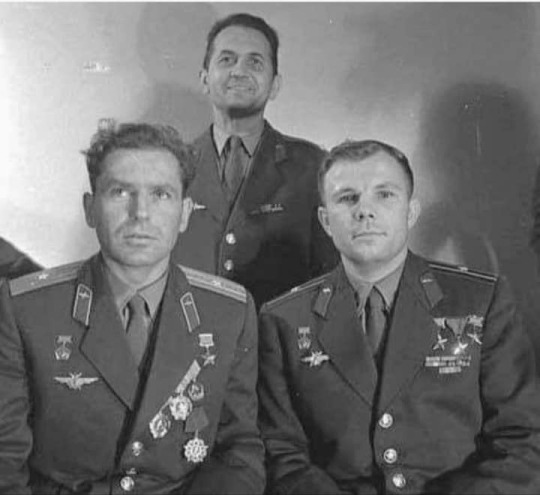
18 notes
·
View notes
Text
WBA Super World Light Heavy Champ Dmitry Bivol Beats Umar Salamov! ⋆ Boxing News 24
WBA Super World Light Heavy Champ Dmitry Bivol Beats Umar Salamov! ⋆ Boxing News 24
By Ken Hissner: At the KRK “Uralets,” Ekaterinburg, Russia, Saturday, over ESPN+ German Titov (Titov RCC/Boxing Promotions), in the Main Event fighting in Russia for the first time since 2017 WBA Super World Light Heavy champion Dmitry Bivol defeated Umar Salamov over 12 rounds. WBO International Super Welter champ champion Magomed “Back Lion” Kurbanov and Patrick Teixeira’s bout was canceled an…

View On WordPress
2 notes
·
View notes
Photo

Wait...what??
From Russian Aviation:
A Soviet isolation chamber for cosmonaut training stolen in Moscow
Russian Aviaton » Monday April 16, 2018 19:50 MSK
An isolation chamber that must have been used in pre-flight training by the first man in space Yuri Gagarin has been stolen in Moscow. The press-service of Moscow’s Cosmonautics Museum told TASS it disappeared from the premises of an industrial enterprise where it was to be examined for authenticity.
"It is true that the isolation chamber has gone missing. It was temporarily on the register of the Cosmonautics Museum. At the moment of theft it did not belong to the museum and was not inside the museum. It was stolen from a restoration workshop in the Strogino neighborhood," the press-service said.
No further details are available. According to the museum, Soviet cosmonauts had used several isolation chambers for training. At the workshop in Strogino experts were to find out whether the chamber was the one Gagarin, German Titov and other Soviet cosmonauts from the first group used in pre-flight preparations.
"After attribution the chamber was to be restored and delivered to the Cosmonautics Museum," the press-service added.
Law enforcement sources told TASS the chamber had been stolen late last week. The Moscow police have opened a criminal case and investigation is in progress.
Later it was found stripped in a parking lot:

Source: Odessa News
That’s a lot of effort to go to, to harvest scrap metal..
#cosmonauts#isolation chamber#wait...what?#if that's the real one it's probably haunted by#valentin bondarenko#really dumb crooks#i used google translate and feel like i need a shower#i can't read russian other than names and the alphabet
18 notes
·
View notes
Photo
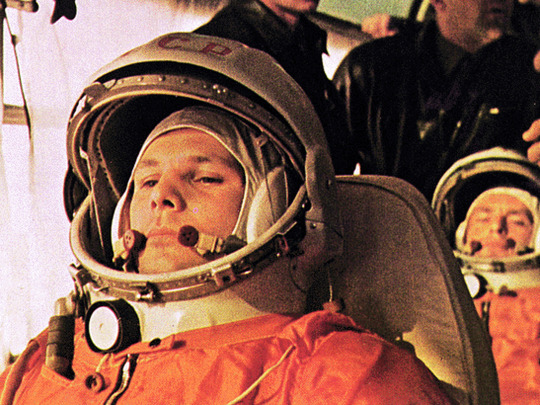
FIRST MAN IN SPACE
Yuri (sometimes Romanized as Yury) Alekseyevich Gagarin was a Soviet Air Force colonel best known for his flight on Vostok 1, making him the first human in orbit around the Earth. Gagarin was born in Klushino, Russia in 1934. He enjoyed playing hockey and basketball, and his favorite pastimes included space, planets, and aeronautics. On March 27, 1968, Gagarin was killed when his fighter jet crashed in Novosyolovo near the town of Kirzach in the Soviet Union. He was 34 years old.
Gagarin's home town of Gzhatsk, Russia was renamed Gagarin after his death. Gagarin had three siblings and his parents were peasants on a state farm. Their family suffered from the Nazi occupation during World War II, and spent most of the occupation living outdoors when their home was converted into a German officer's quarters. The Gagarin family moved to Gzhatsk in 1946.
In 1955, Gagarin entered military flight training at Orenburg, Russia, and married Valentina Goryacheva in 1957. After receiving his flight wings he was stationed near the Norwegian border. In 1959 Gagarin became a Senior Lieutenant in the Soviet Air Force.
Gagarin was chosen for the Soviet manned spaceflight program in 1960 along with 19 other air force pilots. From this group of nineteen the first Vostok (English: Orient) pilots were selected for a group called Sochi. This group underwent the most severe physical and psychological training. Gagarin, along with another member of Sochi named Gherman Titov, were selected as the two best candidates for the first Vostok flight. One of the deciding factors was height, because of the small space inside the Vostok capsule. At the time of his selection, Gagarin was just 1.6 meters tall.
In August 1960, a Soviet Air Force doctor evaluated Gagarin's personality as modest and intelligent with an extraordinary memory. He was described as having a strong imagination and quick reactions to his surroundings. It was among these traits that led to Gagarin's selection for the Vostok 1 mission.
Gagarin's mission was Vostok 1 (officially Vostok 3KA-3). Two missions prior to Vostok 1 also used the Vostok 3KA spacecraft – these were Vostok 3KA-1 and Vostok 3KA-2. Officially these were designated as Sputnik 9 and Sputnik 10 in the west, to conceal their true missions. On March 9, 1961, Vostok 3KA-1 carried the mannequin Ivan Ivanovich (the Russian equivalent of John Doe), a dog named Chernushka, some mice and a guinea pig into one orbit around the Earth. The mannequin was ejected an parachuted to the ground, and Chernushka was recovered unharmed. Two weeks later on March 25, Vostok 3KA-2 carried the Ivanovich mannequin, a dog named Zvezdochka (“Little Star” in English; the name was suggested by Gagarin), television cameras and various scientific apparatus into one orbit around the Earth. The mannequin and Zvezdochka were both recovered.
On April 12, 1961, Vostok 1 was launched from Baikonur Cosmodrome Site 1 in modern-day Kazakhstan (officially, launch occurred from Tyuratum – the Soviets insisted this was the launch site in order to conceal the location of the true launch center). The launch vehicle was a Vostok-K rocket, a member of the R-7 rocket family of which the modern day Proton rocket is a member. Gagarin's callsign was Lastochka (English: Sparrow).
Launch occurred at 6:07 am. The entire mission was controlled from the ground. At 6:09 the booster rockets fell away from the main stage, and the shroud covering the space capsule were released at 6:10, exposing Gagarin's window, which was between his feet. Gagarin reported at 6:13, “The flight is continuing well. I can see the Earth. The visibility is good. I almost see everything. There's a certain amount of space under cumulus cloud cover. I continue the flight, everything is good.”
Mission controllers were not able to verify that Vostok 1 had reached a stable orbit for 17 minutes after loss of signal. At 6:25 am, as Gagarin passed the Kamchatka Peninsula, he requested information about his flight path. Mission controllers informed him that they did not yet have his orbital parameters. At 6:49 am Gagarin reported he was on the night side of the Earth. At 7:25 am, the the onboard attitude control system oriented Vostok 1 for retrofire over Angola. Reentry occurred over Egypt.
Mission controllers sent a command to Vostok 1 for the service module to separate from the spherical crew module. However, the two sections remained connected for ten minutes during reentry. This caused strong gyrations inside the spacecraft. Gagarin reported up to 10g during reentry. Seven kilometers above the ground, Gagarin ejected from his spacecraft and landed safely ten minutes later (officially, Gagarin was said to have landed inside the vehicle – the Soviets insisted this was the case to receive verification from the FAI, and it was not released that Gagarin landed separately from his spacecraft until 1971). The Vostok parachute was released at 3 kilometers altitude. Two schoolgirls described the Vostok as a huge ball that fell, bounced, then fell again. The Vostok's first impact left a giant crater.
Gagarin said that when he landed, he encountered a farmer and his daughter. Gagarin was wearing a bright orange suit with a white helmet. Gagarin recalled, “When they saw me in my space suit and the parachute dragging alongside as I walked, they started to back away in fear. I told them, Don't be afraid, I am a Soviet citizen like you, who has descended from space and I must find a telephone to call Moscow!”
Officially, the United States congratulated the Soviet Union on its accomplishment. Other world leaders had mixed reactions to the flight, many voicing their concerns over the Soviet Union's true intentions regarding their apparent rocket power. After the flight of Vostok 1, Baikonur Cosmodrome Site 1 was renamed Gagarin's Start.
Gagarin became a worldwide celebrity after his flight. He was toured in Italy, Germany, Canada, Brazil, Japan, Egypt and Finland. This sudden rise to fame led to a drinking problem and substantial weight gain for Gagarin, and attention from women took a toll on his marriage. It was rumored that Gagarin once jumped out of a second-floor window in a hotel, resulting in a large cut above his left eye that remained visible for years.
On March 27, 1968, Gagarin and flight instructor Vladimir Seryogin were killed when their MiG-15 fighter jet crashed near Chkalovsky Air Base. Gagarin was 34 years old. The cause of the crash is not currently known and has been subjected to many conspiracy theories. An investigation into the crash was conducted by the KGB. Air traffic controllers had provided Gagarin with a poorly written weather report and left external fuel tanks attached to the aircraft. Gagarin's aircraft may have struck a bird and entered an uncontrollable spin, leading to an impact with the ground at a speed faster than Mach-1. Another theory suggests that the crew detected an open vent which led to oxygen deprivation in the cabin. Gagarin then followed procedure by entering a steep dive to reach a lower altitude. The crew then lost consciousness and never pulled out of the dive. In 2011, the results of an investigation into the crash conducted by an official Soviet agency were released. The original conclusion was that Gagarin had maneuvered sharply to avoid a weather balloon, causing the aircraft to stall.
Even in death, Gagarin retains a legacy as an extraordinary public figure. When he visited Manchester it was pouring rain, however Gagarin insisted that his parade vehicle keep its cover back so that the crowds could see him. He said, “If all these people have turned out to welcome me and can stand in the rain, so can I.” He refused an umbrella and remained standing for the entire parade.
- R Atkinson
Image: A 27-year-old Yuri Gagarin awaits liftoff in the cabin of his Vostok 3KA-3 spacecraft, designated Lastochka, or Sparrow. The cabin was a sphere just 2.3 meters across. (Source: https://www.flickr.com/photos/itupictures/16042132243/)
Sources:
http://www.russianarchives.com/gallery/gagarin/
https://www.scotsman.com/news/world/inquiry-promises-solve-gagarin-death-riddle-2508172
26 notes
·
View notes
Text
ROSCOSMOS - Soyuz-2.1b launches Kosmos-2541
ROSCOSMOS logo.
September 26, 2019
Soyuz-2.1b launches Kosmos-2541
Today, on September 26, 2019, at 10:46 Moscow time, from the Plesetsk State Testing Cosmodrome in the Arkhangelsk Region, the combat crew of the VKS Space Forces successfully launched the Soyuz-2.1b launch vehicle with a spacecraft in the interests of the Russian Ministry of Defense.
The launch of the launch vehicle and the launch of the spacecraft into the calculated orbit took place as usual. Two minutes after the launch, the Soyuz-2.1b launch vehicle was accepted for escort by means of the ground-based automated control complex of the German Titov Main Test Space Center.
Soyuz-2.1b launches Kosmos-2541
At the estimated time, the spacecraft was launched into the target orbit and taken into control by the ground-based means of the aerospace forces. A stable telemetric communication has been established and maintained with the satellite, its on-board systems are functioning normally.
Kosmos-2541 (Tundra) satellite
This is the fourth launch of the Soyuz-2 launch vehicle from the Plesetsk cosmodrome in 2019. Flight tests of the Soyuz-2 space rocket complex began at the Plesetsk cosmodrome on November 8, 2004. Over the past fifteen years, 40 launches of Soyuz-2 launch vehicles of modernization stages 1a, 1b and 1c were carried out from the northern spaceport.
ROSCOSMOS Press Release: https://www.roscosmos.ru/26863/
Image (mentioned), Video, Text, Credits: Russian Ministry of Defense/ROSCOSMOS/SciNews.
Greetings, Orbiter.ch
Full article
12 notes
·
View notes
Photo
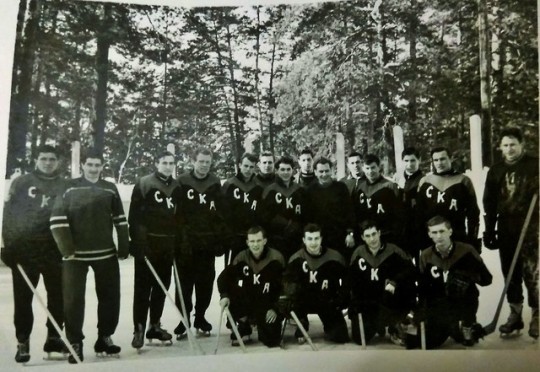
SKA Novosibirsk at their training base in 1962-63, on the occasion of a famous visit -- in the middle of the back row, wearing the wristwatch and the dark sweater without letters, is cosmonaut German Titov. (Image Source, also the source of the note about Titov)
1 note
·
View note
